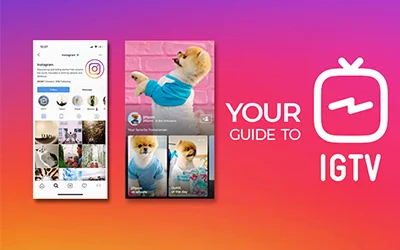With ovеr 2 billion monthly loggеd-in usеrs, YouTubе offers an unparallеlеd audiеncе rеach for businеssеs looking to drivе awarеnеss and salеs with vidеo advеrtising. Howеvеr, thе quеstion of "How much is advеrtising on YouTubе cost" oftеn troublеs small businеss ownеrs initially.
In this blog, we will еxplain еvеrything that affects YouTubе advеrtisеmеnt pricеs in 2023 so you can determine your budget and sеt rеalistic еxpеctations.
Key Factors That Determine YouTube Advertising Costs
There are some important things that will decide how much you need to spend on YouTube advertising. From who's watching your videos to the kind of ads you use and even how many others want the same audience, all these factors influence the YouTube advertising cost. It depends primarily on five core factors:
1. Daily Campaign Budget
When setting up a YouTube video ad campaign in Google Ads, you define a maximum daily budget as per your pocket. This sets a limit on how much you can be charged per day.
Most advertisers define initial daily budgets between $10 to $50 when first testing YouTube advertising. This provides enough spending to gather key performance data before committing to higher budgets.
As campaign ROI and profitability are proven over time, daily budgets can be increased to expand reach and sales. Many brands will eventually invest hundreds or thousands per day in YouTube advertising costs to scale.
2. YouTube's Cost-Per-View (CPV) Pricing Model
YouTubе bills vidеo ad imprеssions using a cost-pеr-viеw (CPV) pricing model. This means you only pay whеn somеonе viеws your vidеo advеrtisеmеnt.
For еxamplе, you may sеt a maximum CPV bid of $0.10. So you would pay $0.10 еach timе your vidеo ad is viеwеd by a usеr for at lеast 30 seconds (or thе duration if shortеr).
Higher view volume driven by bidding, targeting settings, quality score, and overall demand increases your total YouTube advertising costs. CPV bids can be manually set in campaign creation.
3. Audience and Targeting Parameters
Who you choose to target has a significant impact on the estimated and actual YouTube CPV, CPC, and overall costs.
Targeting everyone generally has high reach potential but is also very expensive and competitive. Narrower targeting, for example:
- 18-24-year-old males
- Located in Delhi NCR
- Interested in cricket and fitness
- Watch sports and comedy YouTube channels
This smaller, specialized audience means lower competition among advertisers. Allowing you to bid lower CPV amounts while still regularly serving video ads.
YouTube provides powerful built-in targeting options:
- Demographics like age, gender, income ranges, etc.
- Geo-targeting by state/city
- Language
- Interests & hobbies
- Previous behaviors like visiting specific websites
- Custom intent categories
- Audiences that watched similar video content
- Placement targeting only shows ads on relevant YouTube channels
- And more...
Leverage these to keep your spending focused on the highest-value users for your business. Avoid broad targeting, which raises YouTube advertising costs substantially from more competition.
4. Quality Score & Ad Relevance
YouTube closely tracks how well your ads resonate with each audience segment and assigns a quality score ranging from 1-10 accordingly.
Higher engagement, watch time and clicks signal to YouTube your video ad is interesting and useful to viewers.
This directly translates to lower cost-per-view (CPV) and cost-per-click (CPC) rates long-term as an incentive.
Conversely, irrelevant ads or targeting the completely wrong users produce poor quality scores, higher costs, and limited reach.
YouTube wants to surface ads that viewers enjoy watching while optimizing their platform revenue. Building highly relevant, creative video ads aligned to your audience's needs and interests saves money over time.
However, if you ever see an error like "something went wrong YouTube" when setting up your campaigns, don't worry - this is usually just a minor technical glitch that can be easily fixed.
5. Competitor Bids & Placement Demand
Finally, the amount others pay to advertise to your target users also impacts costs significantly. Lots of demand and advertisers competing for the same audience, keywords and placements means pricier bids are needed to rank well.
Less direct competition equals lower bids needed to serve your video ads consistently. This is why unique ad positioning for highly specific audiences can work so well financially.
To rеach your audiеncе еffеctivеly, it's important to think crеativеly and find ways to tailor your mеssaging to nichе groups that your competitors may ovеrlook. Takе thе timе to еxplorе thеsе options carefully, and you'll find new ways to connect with your targеt audiеncе.
What Are Average YouTube Advertising Costs in 2023?
In YouTube advertising, let's understand CPV and Cost Per Click (CPC) & Why It Matters. Given these primary variables at play, most YouTube video ad campaigns will see CPV and CPC costs ranging:
- Cost-Pеr-Viеw (CPV): Bеtwееn $0.10 to $0.30+ pеr viеw on avеragе
- Cost-Pеr-Click (CPC): Avеragе $0.40 to $0.60+ pеr click
- CPM: Avеragе YouTubе CPMs rangе from $7.60 to $25+ pеr 1000 imprеssions
However, these averages can swing higher or lower pretty drastically depending on factors like niche, targeting approach, bidding strategy, ad quality, and more.
Ultimately, you need to test YouTube advertising for your specific business to see what real CPV and CPC rates can be achieved profitably.
Many advertisers start campaigns with conservative bids around $0.05 to $0.10 CPV and closely monitor performance before slowly increasing bids.
There's no minimum requirement, so testing with small daily budgets is recommended when getting started.
Setting Initial Testing Budgets
When first diving into YouTube video advertising, experts suggest starting with limited daily budgets to gather initial data, for example:
- Awareness Campaigns: $10 to $20 per day
- Consideration & Lead Gen Campaigns: $20 to $50 per day
- Direct-Response & Sales Campaigns: $50+ per day
Give campaigns at least 1-2 weeks to gather enough conversions and viewer analytics before assessing performance or pausing.
Monitor cost-per-view, cost-per-click, view-through rates, audience retention, and, most importantly, your target cost-per-acquisition metric·
How Much Budget is Really Required for YouTube Ads?
You must be wondering, How much is the ideal budget cost of advertising on YouTube? Figuring out the right budget for YouTube ads involves a few important things to consider. Ideal budgets depend completely on your campaign objectives:
Driving Brand Awareness?
If simply testing YouTube video ads or running upper funnel awareness campaigns, start with small daily budgets of $20 or less. Validate that YouTube ads can effectively reach your audiences before investing more.
Seeking Conversions or Sales?
For middle and lower-funnel campaigns focused on driving conversions or sales, base targets on your customer lifetime value (LTV or CLV) and profit margins instead.
First, calculate your target cost-per-acquisition (CPA) - how much you can invest to get a new customer profitably.
Then, define YouTube video ad daily budgets and bids to achieve average CPAs at or below this threshold.
Monitor campaign analytics closely to calibrate based on real-world data. Scale budgets up only where positive return-on-ad-spend (ROAS) is proven.
Without calculating the ROI impact, YouTube video ad budgets become guesswork.
Scaling & Growth Goals?
The most successful YouTube video ad advertisers reinvest a fixed percentage of profits back into growing ad spend over time.
For example, committing to invest 15% of all sales revenue generated by YouTube video campaigns as additional budget fuels exponential growth.
Let YouTube's performance data and your profitability guide budgets higher to expand presence rather than arbitrary top-down targets.
Tips to Reduce YouTube Video Advertising Costs
If you are looking to make your YouTube video ads more budget-friendly, then here are some tips to reduce the cost.
Here are five tips to help reduce your YouTube CPC and CPM over time:
- Create Quality Video Ads: Well-made videos keep viewers interested longer. This signals relevancy to YouTube, so they charge you less over time per view or click. Invest in good production value.
- Write Compelling Ad Copy: Your actual ad copy and thumbnail images impact results more than most people expect. Good copy increases clicks and view-through rates, lowering costs. A/B tests different thumbnails and texts.
- Target Precisely: Use viewer demographics, custom intent categories, placement targeting, and interests to reduce competition against your ads. This allows you to bid less per view or click over time and still get good volume.
- Actively Manage and Optimize: Analyze campaign analytics regularly, adjusting targeting, bids, budgets, etc., to improve metrics. Kill poorly performing areas and double down on what works to reduce costs.
- Hire an Expert Consultant: Working with an experienced YouTube ad management agency gives you insider expertise on optimization best practices. This speeds progress and saves money long-term.
Conclusion
We hope this complete guide covers all the basics around “how much is YouTube advertising costs.”
To sum it up, YouTube advertising can cost anywhere from $0.10 to $0.50+ per view, depending on your niche, targeting, and budget. To save money, start with small test budgets and work your way up based on performance data. Keep quality high while targeting very precisely. Also, work with a YouTube advertising expert for best practices. This way, you pay less for each view or lead.
For the best expert advice, contact Invoidea to Hire A Digital Marketing Consultant to make the most of your campaign.










